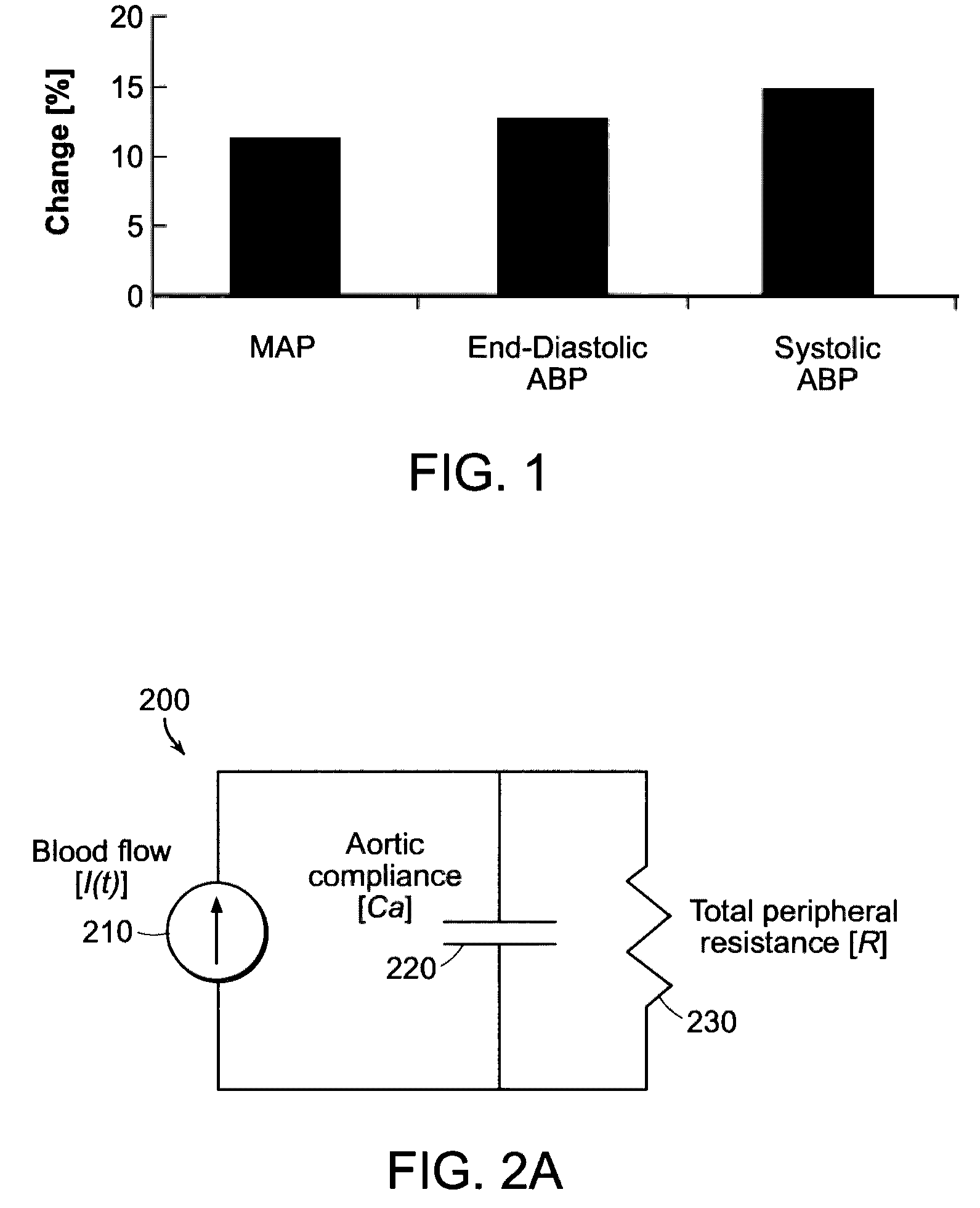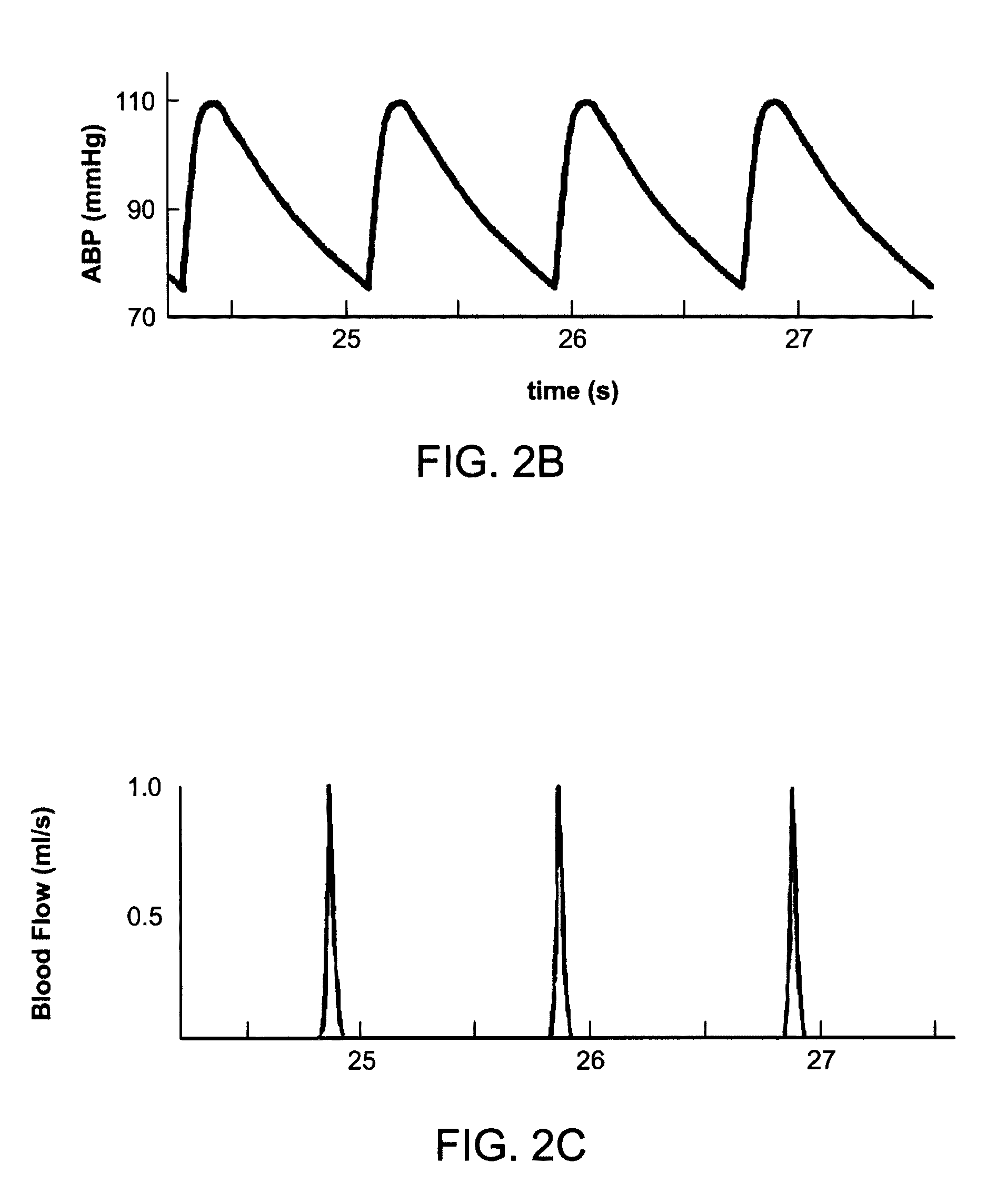Method for estimating changes of cardiovascular indices using peripheal arterial blood pressure waveform
a technology of peripheal arterial blood pressure and waveform, which is applied in the field of systems and methods for determining cardiovascular indices from peripheral arterial blood pressure, can solve the problems of difficult to obtain, prone to distortion, and requires a drastic chest opening procedure, and achieve reliable and accurate estimates of stroke volume and related cardiovascular indices.
- Summary
- Abstract
- Description
- Claims
- Application Information
AI Technical Summary
Benefits of technology
Problems solved by technology
Method used
Image
Examples
example
[0091]In this example, data from six Yorkshire Swine (30-34 kg) previously recorded under a protocol approved by the MIT Committee on Animal Care were processed and analyzed offline. During the actual trials with each swine, both aortic blood flow and femoral ABP were recorded using an ultrasonic flow probe (T206 with A-series probes, Transonic Systems, Ithaca, N.Y.) placed around the aortic root and an external pressure transducer (TSD104A, Biopac Systems, Santa Barbara, Calif.). For details of the data record and protocol following during the actual trials, refer to R. Mukkamala, et al., “Continuous cardiac output monitoring by peripheral blood pressure waveform analysis,”IEEE Trans Biomed Eng, vol. 53, pp. 459-67, March 2006.
[0092]Algorithms based upon the methods described above were developed to process the swine data. The algorithms were applied to the swine data to calculate beat-to-beat τi estimates. The τi values were then used to estimate values for proportional TPR, CO an...
PUM
 Login to View More
Login to View More Abstract
Description
Claims
Application Information
 Login to View More
Login to View More - R&D
- Intellectual Property
- Life Sciences
- Materials
- Tech Scout
- Unparalleled Data Quality
- Higher Quality Content
- 60% Fewer Hallucinations
Browse by: Latest US Patents, China's latest patents, Technical Efficacy Thesaurus, Application Domain, Technology Topic, Popular Technical Reports.
© 2025 PatSnap. All rights reserved.Legal|Privacy policy|Modern Slavery Act Transparency Statement|Sitemap|About US| Contact US: help@patsnap.com



